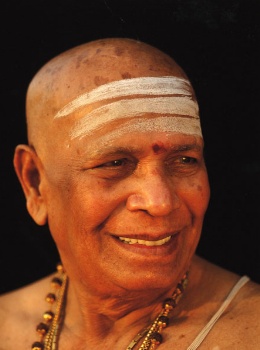 Choosing a yoga style is like trying to find a great pair of jeans. You may have to test out a few dozen styles before you find a pair that fits your body and your personality.
Choosing a yoga style is like trying to find a great pair of jeans. You may have to test out a few dozen styles before you find a pair that fits your body and your personality.
Here are five of the most popular yoga classes and an introduction into the philosophy, history and style of each.
Ashtanga Yoga: One of the oldest form of yoga, Ashtanga Yoga, is Sanskrit for “eight limbs,” which represent the eight aspects of yoga as outlined by the sage Patanjali in the Yoga Sutras. Even though Ashtanga yoga is believed to be 5,000 years old, if not older, its modern popularity is credited to Sri K. Pattabhi Jois, who in 1948, under the guidance of his guru, Krishnamacharya, created The Ashtanga Yoga Research Institute in Mysore, India for teaching this specific style of yoga.
What to expect: Ashtanga yoga is often referred to as being the athletic form of yoga because of its discipline and dynamic system of vinyasa, a process that links breath to movement. It is a set series of specific asansas or postures that are performed in a sequential manner. Classes start by performing ten Sun Salutations followed by a standing, seated and finishing sequence. Once in the full expression of the posture, the asana is held for a minimum of five breaths.
Overall, the series emphasizes strength, flexibility, balance and endurance. Madonna, Sting, Gwyneth Paltrow, Willem Dafoe and Donna Karan are all fans of Ashtanga yoga.
Ashtanga yoga is traditionally taught in a Mysore-style whereby the instructor assists each practitioner along his or her practice according to their own pace and level. In the West, you can find both Mysore-style classes as well as led classes taught by instructors.
Iyengar yoga: Like Ashtanga yoga, Iyengar yoga is rooted in Patanjali’s eight limbs of yoga. Created by B.K.S. Iyengar, this form of yoga is known by its use of props like belts, bolsters and chairs as well as its precise focus to structural alignment. Perhaps one of the most researched forms of yoga, Iyengar yoga has been shown to be a therapeutic practice for those suffering from back pain, musculoskeletal injuries and disorders, cardiovascular disease, depression and anxiety. Iyengar instructors must complete at least two years of rigorous training before teaching.
What to expect: You can expect to perform a number of standing postures with the assistance of a variety of props as well as verbal instruction from your teacher. Since there is much attention made to alignment and structure, verbal as well as physical corrections are a regular part of class.
Anusara Yoga: One of the newer form of yoga, Anusara, which means “flowing with grace,” was created by Texas-born John Friend in 1997. The emphasis of Anusara yoga is on Friend’s own Universal Principles of Alignment whereby all postures aim to open and soften the heart and adhere to the three main Anusara principles of action, alignment and attitude. The underlying philosophy of Anusara yoga is based on the premise that every person is created as an embodiment of the divine and each of the poses celebrate the goodness that is intrinsic to all living beings.
What to expect: Each Anusara class begins with a chant or invocation repeated three times. From there, the instructor guides students along a series of postures that correspond to a specific theme or intention for the class. You can expect a class that is gentle in nature with a lot of dialogue that is both instructional and philosophical and stresses the importance of balanced alignment throughout the body.
Bikram Yoga: Created and trademarked by Bikram Choudhury in 1973, Bikram yoga, often referred to as “hot yoga,” is a style of yoga that is performed in a room that is heated to 105°F (40.5°C) with a humidity of 40 percent. The purpose of the heat is to improve wellness, deepen flexibility and range of motion and sweat out impurities and toxins that have accumulated in the body. Despite its popularity, Bikram yoga is a controversial style of yoga whereby its founder and its claims have raised both ethical and safety questions.
What to expect: Bikram yoga classes last for 90 minutes and involve performing 26 postures and two breathing exercises in a sequential manner. It is quite common for beginners to experience dizziness or nausea and similar to other kinds of yoga, endurance, concentration and discipline are required to complete a session.
Raga Yoga: Whereas most Western yoga classes deal primarily with asanas or postures and may or may not have a meditation aspect to them, Raja yoga focuses almost exclusively on meditation as its primary practice. Its aim is to control the mind, most specifically, the fluctuations in thoughts, which can tax the nervous system and result in ego-based behavior. Raja yoga is discussed at length in the Yoga Sutras of Patanjali and its meditative focus is considered one of the paths to Samadhi or bliss.
What to expect: Raja yoga classes are taught by an instructor who is well-versed in meditation techniques that still the mind and expand the awareness of spiritual realities. You can expect to engage in pranayama exercises and yoga postures as a way to prepare the mind for meditation, which is generally guided or taught by the instructor. Meditation cushions may or may not be provided and comfortable clothing is encouraged.
And if you’re new to yoga, don’t forget to check out our Beginner’s Guide to Yoga, which includes everything you need to know about starting your own yoga practice.

